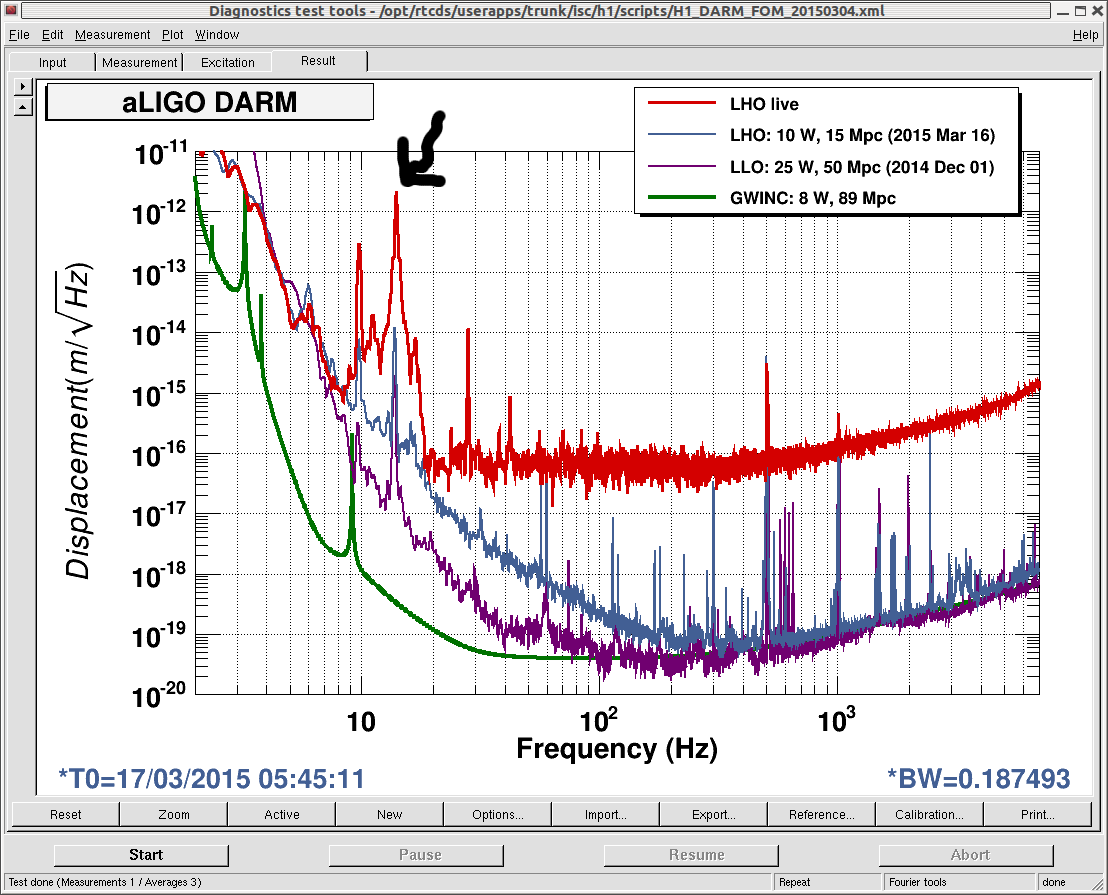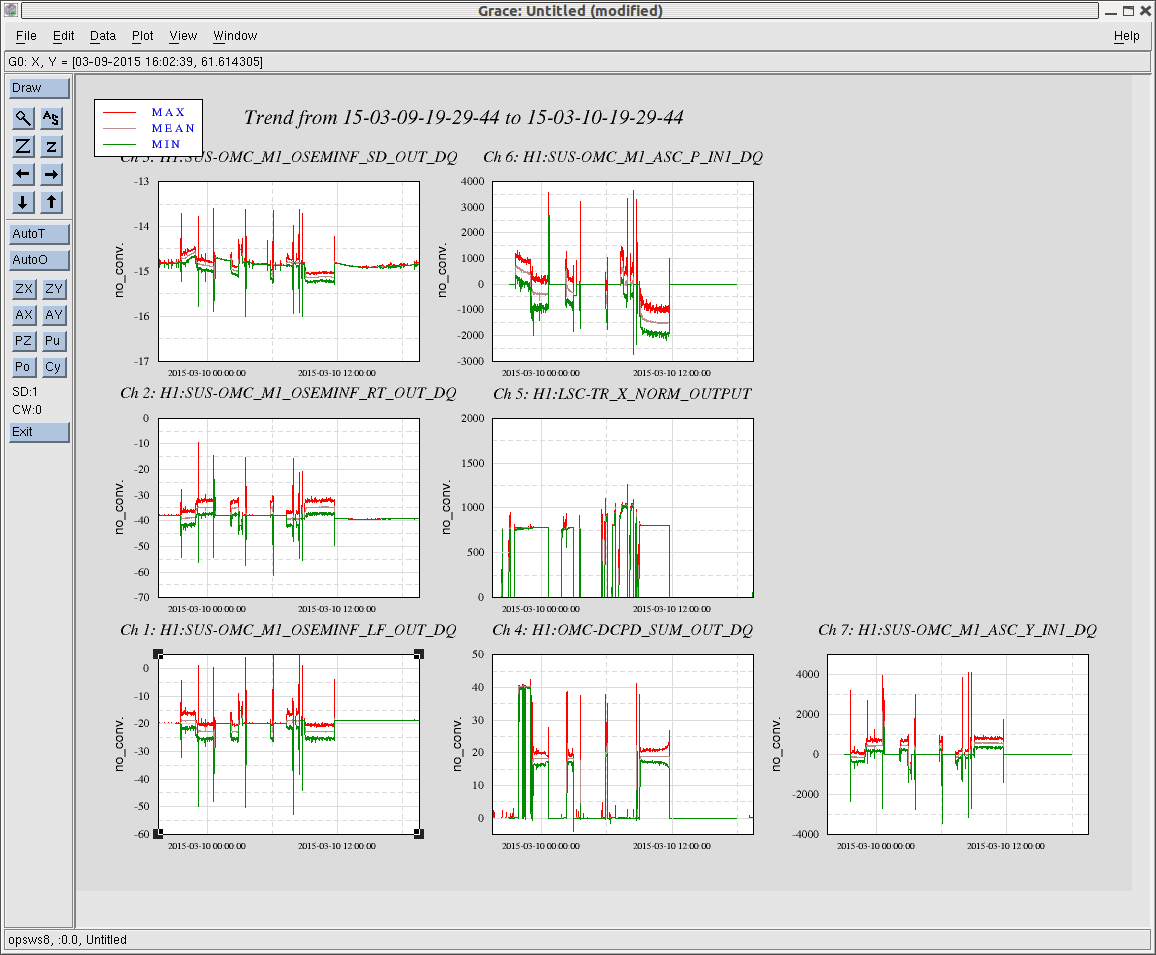P. King, J. Oberling, E. Merilh
Summary
FSS RefCav TPD started drifting again, went in to re-align. Check mirrors M23, M22, and M21, all found loose. M23 and M21 pitch adjustments recovered RefCav TPD, M22 had no effect; all pitch adjustment screws locked. FSS RefCav TPD left at 1.56V. Adjusted M36 to optimize power incident on PMC_TRANS PD, now reading 23.03 W (up from 22.99 W). Measured FSS TF, UGF measured at 195 kHz.
Details
The FSS RefCav TPD had begun to drift down again, so we went in and checked the remaining 3 mirrors in the FSS beam path: M21, M22, and M23. We first checked M23 and found the pitch adjustment screw to be loose. Turning this screw CW (pitching the mirror down) caused the RefCav TPD to change from 1.23V to 1.53V; the adjustment screw was locked. M22 was also found unlocked, but did not effect the RefCav Trans; this adjustment screw was also locked. The final mirror in the FSS path that we had not inspected before was M21, and lo-and-behold, the pitch adjustment screw was unlocked. Turning this screw CW (pitching the mirror down) took the RefCav TPD from 1.53V to 1.56V; this adjustment screw was then locked. We will continue to monitor the FSS RefCav TPD.
Since the transmission through M23 is responsible for the PMC_TRANS reading, we slightly tweaked M36 to optimize the reading of the PMC_TRANS PD. Before the adjustment the PMC_TRANS was reading 22.99W, it is now reading 23.03W.
Finally, we took a TF of the full FSS loop, and measured the UGF to be ~195 kHz. Peter has the full TF data and will add it as a comment to this post.


















